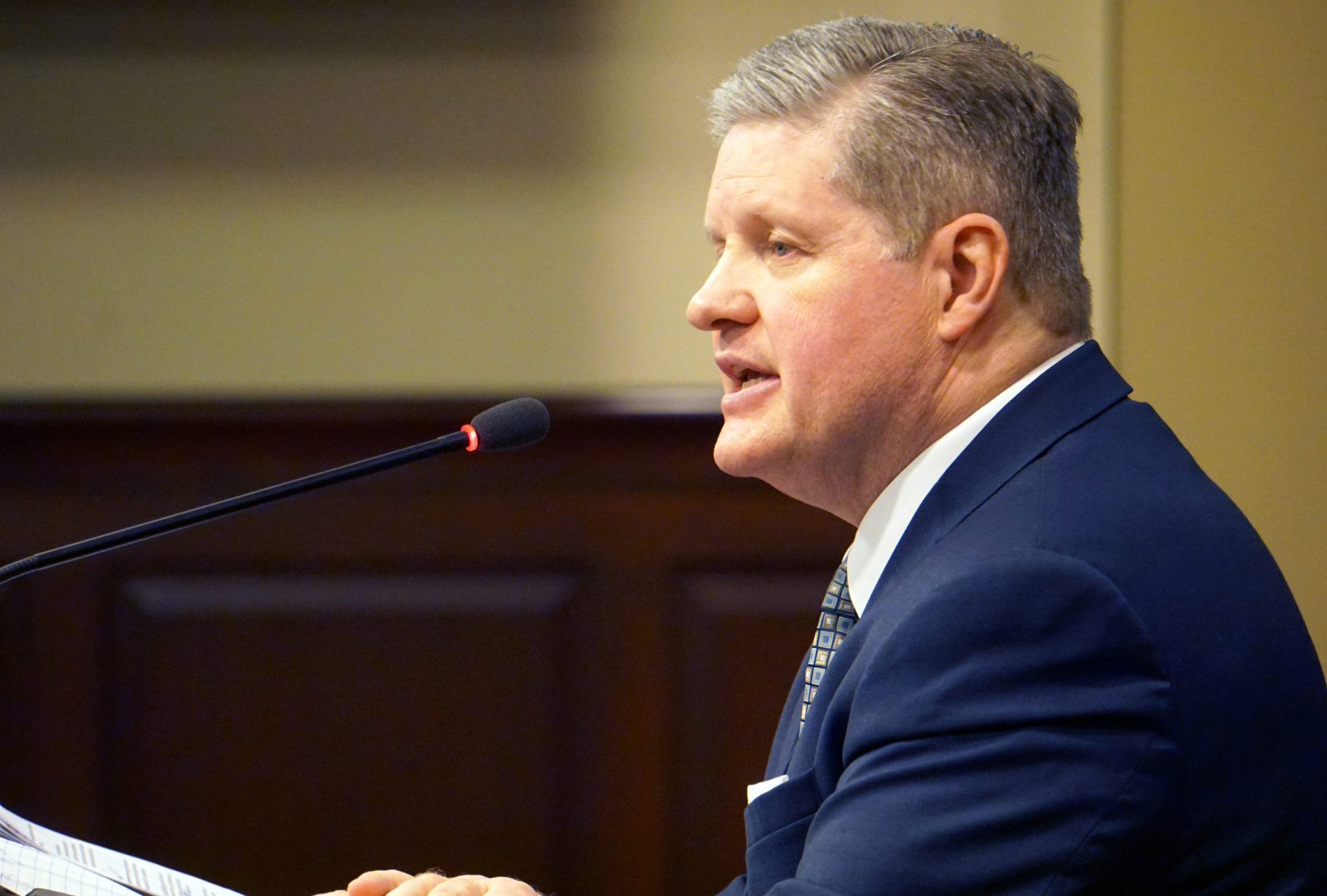House Speaker Scott Bedke set the stage for one of the biggest education debates of the year Thursday, when he walked fellow legislators through a proposed new school funding formula.
More than 100 people attended the rare joint session of the House and Senate education committees to watch a demonstration on the proposal.
The new formula first surfaced in November, when the Legislature’s Public School Funding Formula’s Interim Committee recommended scrapping Idaho’s current, attendance-based funding model in favor of an enrollment-based model.
Thursday’s meeting represented the symbolic handoff of the proposal from the interim committee to the 2019 Legislature and its education committees.
Legislators took no action Thursday. So far there isn’t even a bill to vote on — although state officials are busy drafting legislation that could be introduced in the coming days or weeks.
During Thursday’s nearly two-hour meeting, Bedke did most of the talking — perhaps signaling how important the change is to the House’s top-ranking member.
Bedke and other lawmakers who developed the proposal attempted to make the case that the existing formula is outdated and too complicated. Adopted in 1994, this formula predates online learning, the proliferation of charter schools, student mobility, dual-credit courses and concurrent enrollment.
“We don’t want something like how we distribute state funds to be a hinderance to the innovation that is happening in our schools,” said Sen. Lori Den Hartog, R-Meridian.
But a sticking point is that the new formula would distribute state funding to schools in different ways. One by-product: Some districts would expect to see funding drop below current levels. Under the draft the interim committee approved in November, 36 school districts would expect to see less funding under the new model than they receive this year. The remaining districts would expect funding to increase or stay the same.
Here are two examples at the opposite ends of the tug of war.
West Ada, the state’s largest district, would expect to see funding increase by $9.7 million per year.
Orofino, a small rural district with a large special education population, would lose $1.3 million per year.
That is something lawmakers will have to weigh, said Sen. Carl Crabtree, R-Grangeville.
“We can’t pass a levy in some of our school districts,” Crabtree said. “Our flexibility becomes quite limited. When our backs are against the wall, flexibility is really restricted. I don’t know how we recover when we’re $1 million or more in a deficit.”
Earlier in the meeting, Bedke said he has been frustrated that the debate has centered on winners and losers.
“To throw this away or criticize this at this point before we have all discussions that have got to take place, I think is unfair and shortsighted,” Bedke said.
Bedke also appeared to outline his preferred strategy for moving forward. The Legislature would pass the new funding formula this year, but it would not take effect until the 2020-21 school year. That would give school districts the chance to run simulations through the formula, brace for changes and then come back to the 2020 Legislature to make fine-tuning changes before the launch. Bedke and interim committee members have also proposed setting aside additional state funding to temporarily hold school districts harmless, so they would not receive less funding than they do now. This protection would fall away after three years.
House Education Chairman Lance Clow, R-Twin Falls, said he will devote Monday’s meeting to a follow-up discussion of the funding formula proposal.
Career-technical education funding
Idaho’s career-technical division wants another $6.3 million to expand its programs — and help more students develop skills they can take into the work force.
Gov. Brad Little has taken a more cautious tack. He has endorsed only $2.3 million in these line items. He also wants to set aside some money to address shortfalls in the agency’s budget.
The Legislature’s Joint Finance-Appropriations Committee drilled down into these budget differences Thursday morning.

Career-technical education is nothing new. As division director Dwight Johnson told JFAC Thursday, Idaho’s program is marking its 100th anniversary this year. But as Idaho continues to push its elusive “60 percent goal” — and tries to convince 25- to 34-year-olds to obtain a college degree or professional certificate — career-technical education has come under closer focus.
Johnson is seeking $71.9 million in general fund dollars for CTE, an 8.3 percent increase. Little has proposed a 2.7 percent increase.
Most of the difference comes back to line items.
Johnson sought $2 million to shift CTE towards “outcomes-based” funding — rewarding schools based on whether students earn certificates on time, or enrolling at-risk students. Little wants a year to further study outcomes-based funding in higher education.
Little also zeroed out a $515,000 line item to recruit and prepare new CTE teachers.
A few line items made the cut, although Little pared back several requests. One line item would continue a four-year plan to expand CTE into middle schools. Another would continue the work of aligning high school CTE courses with college programs.
But Little is concerned with the agency’s shortfall, and absorbing cost increases. He has proposed his own line item to address the shortfall.
Thursday’s discussion wasn’t limited to parsing differences in the budget.
Rep. Neil Anderson, R-Blackfoot, noted that the state’s adult education programs are serving fewer Idahoans than they did five years ago. He questioned whether these programs are effective, when more Idahoans find jobs in a robust economy.
“Is it going to take a recession for us to get to the 60 percent?” he asked.
The adult education numbers dropped, Johnson said, as federal guidelines required CTE programs to provide more intensive services to fewer people. The adult education enrollment numbers are rebounding, exceeding 5,500 a year ago. And CTE remains the “low-hanging fruit” in Idaho’s 60 percent push, Johnson said.
“It’s the short-term training … that can make a difference immediately for individuals,” he said.
Idaho Education News reporter Kevin Richert contributed to this report.
